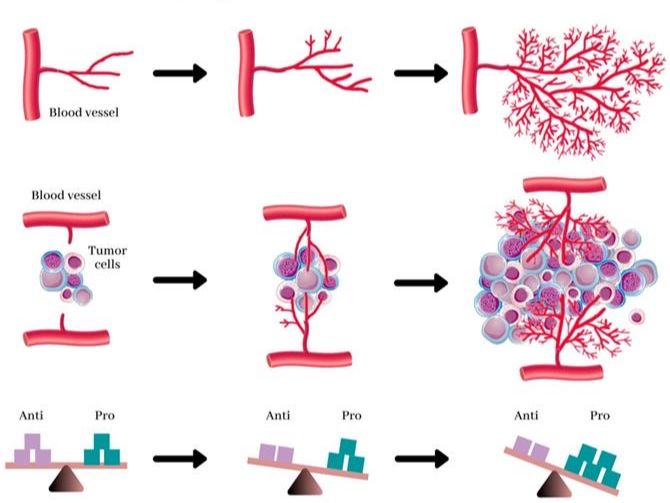Physiology is Key in Thermography

by Anthony Piana, DC, FPACT
To understand the process of using thermography for detecting breast cancer, we must first understand physiology. We are not looking for breast cancer itself per say, but physiological changes that may be involved with its formation and growth. Breast cancer can cause inflammation due to tissue disruption, or through the development of new blood vessels that feed the tumor — a process known as angiogenesis.
However, some physiological changes can also make it more difficult to detect breast cancer, such as a symphatic response that causes hypothermia in the tissue around a tumor. This is why following up is so important, as thermography and other anatomical tests can evaluate the body over time and under different physiological states. Physiology is key, and we should be mindful of the signs and obstacles when trying to detect breast cancer as early as possible.
More on ANGIOGENESIS…
by Kimberly Lavoie, ACNP-BC, CCRN, SCRN
As Dr. Piana stated, angiogenesis is the formation of new blood vessels from previously existing blood vessel plexus. This process involves the growth of endothelial cells, which line the inside walls of blood vessels. It is supportive in the healing of wounds and granulation of tissues. Physiological angiogenesis is a normal and vital process in growth and development specifically, during fetal development, female reproductive cycle, and tissue repair. The fine balance between pro-angiogenic growth factor (GF), anti-angiogenic GF, and cytokines tightly regulate angiogenesis.
Whereas, an uncontrolled or inadequate balance of angiogenesis plays a pivotal role in pathological angiogenesis and promotes the formation of neoplasms, retinopathies, coronary artery disease, and other various disease processes. Tumors are dependent on angiogenesis and need vascular growth to transition from a benign to a malignant state. In the absence of vascular growth, tumors are not sustainable. With increased vascular activity generating heat, thermography can aid in early detection.

Excessive/uncontrolled balance
- Cancer
- Rheumatoid arthritis
- Psoriasis
- Blindness
Insufficient balance
- Neurovascular infarcts/strokes
- Cardiovascular Disease
- Scleroderma
Leave a Comment
